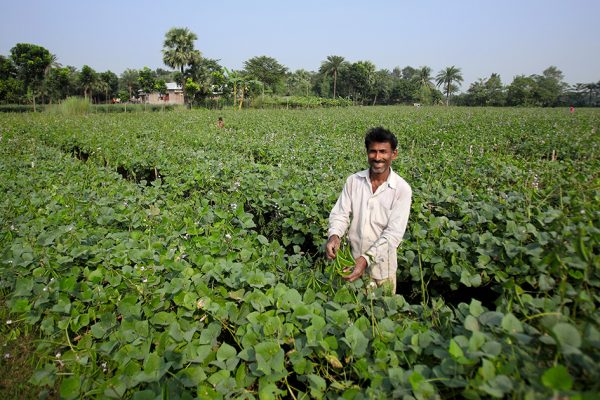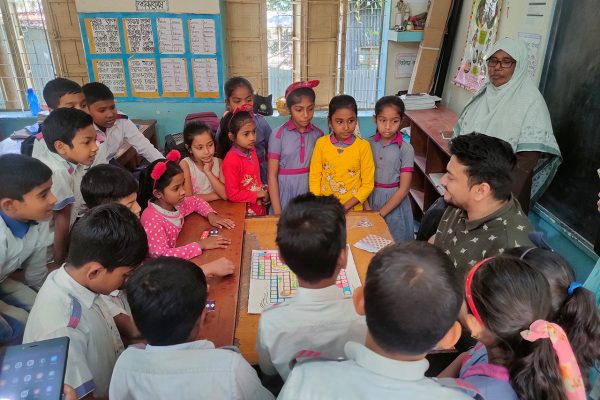Cornell MBA student pursues her dream internship at Aarong
Reading Time: 3 minutes
I am a first year MBA student at the Johnson School at Cornell University. This past year I was studying Sustainable Global Enterprise and social entrepreneurship and am so thrilled to be doing my internship with BRAC-Aarong this summer. Most first-year MBA students take internship positions with large banks, consumer package goods companies or other corporations. And while many of my classmates came to b-school to purse these more traditional paths, I envisioned a career where I would be able to merge my creative background with my newly honed business skills and work for a company that considered social and environmental needs in addition to the bottom line. But honestly, when I first started looking for an internship, I thought that this was a pipe dream.

I am a first year MBA student at the Johnson School at Cornell University. This past year I was studying Sustainable Global Enterprise and social entrepreneurship and am so thrilled to be doing my internship with BRAC-Aarong this summer. Most first-year MBA students take internship positions with large banks, consumer package goods companies or other corporations. And while many of my classmates came to b-school to purse these more traditional paths, I envisioned a career where I would be able to merge my creative background with my newly honed business skills and work for a company that considered social and environmental needs in addition to the bottom line. But honestly, when I first started looking for an internship, I thought that this was a pipe dream.
It was in the middle of a half-hearted internship search that I first heard about BRAC and Aarong in my Sustainable Global Enterprise class at Cornell. Through the course of the talk delivered by Santhosh Ramdoss, BRAC USA Program Manager, our class learnt about BRAC’s unique and successful approach to aid and development, and about a BRAC social enterprise called Aarong. As an ethically sourced textile company, Aarong employs thousands of rural artisans across Bangladesh. My ears perked up. Coming from the art industry, I had a particular interest in working with crafts people and was interested in BRAC’s work with local artisans.

As I learned more about Aarong, I was amazed by the company’s tremendous success. But what I was most drawn to was Aarong’s reputation within Bangladesh. The company is so highly regarded mainly for its gorgeous, fashion-forward designs and house wares that celebrate Bangladeshi techniques and motifs. The opportunity was also appealing because, until I went back to school, I had spent my entire professional life living and working in New York City. And after a semester of reading and hearing about business in the developing world, I wanted to immerse myself in another country. Being in Dhaka and navigating a new business landscape and immersing myself in a new culture is an incredible opportunity and adds another layer to my experience that I would not have had I stayed in the States. This summer, to me is about more than just my project with Aarong. It will surely inform my career and business choices moving forward and gives me hope that there are opportunities to pursue all of my interests and to make the career that I want.
During my first week at Aarong, my goal was to immerse myself in the company and to learn as much as I could about this unique company. Part of that was taking a trip to see one the many Aarong production centers. I was incredibly fortunate that Rafiq Islam, Program Head of the Ayesha Abed Foundation, offered to take me to Manikganj, the largest and oldest of the production centers, located a few hours west of Dhaka. Rafiq bhai has been with BRAC since 1978 and on the drive up gave me a history of BRAC and told me some amazing stories about what it was like in the very early days of the organization. He told me that at one point when he first started, things were so tough, that he nearly quit. He promised Sir Abed that he would give it three more months, and wound up staying for more than 30 years.

When we arrived in Manikganj, we met up with Susan Davis, President & CEO of BRAC USA, who was visiting with BRAC USA board member – Bridget Liddell, British MP – Robert Evans, and Emma Earl. They graciously allowed me to accompany them as they went to visit several of BRAC’s programs in the surrounding villages. As a social enterprise, a portion of Aarong’s profits go towards BRAC’s development work (the rest are re-invested in the company). It was so inspiring to have the chance to see those programs at work. In addition to a tour of Aarong’s main facility, we went to one of the production sub-centers a few miles away. The sub-centers are the heart and soul of Aarong. Though they receive some training from Aarong, many had learned the stitches and techniques from their mothers and grandmothers. There were women of all ages there, including a young girl who was working for the sub-center as a summer job to save money for books and clothes for the school year. Seeing the women at work (many were doing hand embroidery on a gorgeous pink sari) made me so proud to work for and to wear Aarong!





